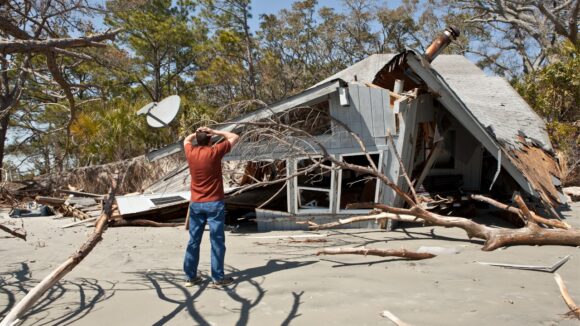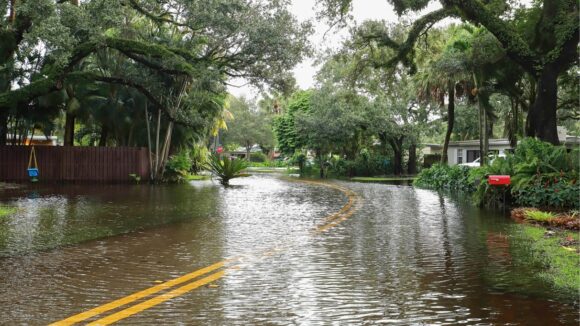

This post is part of a series sponsored by AgentSync.

Hurricanes. Wildfires. Earthquakes. What do they have in common? If you’re in the insurance industry, the answer is that they’re all guaranteed to trigger weather and disaster claims from those with disaster coverage.
For carriers and adjuster firms, that ultimately means activating an emergency response amongst their staff. This could involve deploying a tsunami of hundreds of adjusters to an affected state or region. Whether these are staff adjusters or independent contractors brought on just for a single emergency response, onboarding and license compliance are critical to ensuring claims can be processed and filed in a timely manner.
Before we jump into the meat of the blog, it’s important to keep in mind that we’re not lawyers, and we’re presenting this information for the sake of general education and industry discussion – you’re responsible for doing your own due diligence.
Many states – particularly those with robust weather disaster cycles – have specific timelines in which to process claims. Insurers that want to be able to sort the wheat from the chaff of legitimate vs. fraudulent claims need to act fast.
There are a number of reasons insurance carriers want to be quick to the scene in the aftermath of a natural disaster or weather event such as a hurricane or wildfire:
You may be thinking, “Surely that’s what all the apps and AIs are for, right? I’ve seen a million instant-claims-filing app advertisements on the Snapchat, so, speedy claims problem SOLVED.”
Unfortunately, many claims aren’t “clean,” and thus human adjusters with their human need for licensing have to get involved, either by being physically on site or by virtually handling the claims process via photos, videos, and other digital data gathering. Problem decidedly not solved.

Similar to insurance producers, insurance adjusters also have to maintain licenses in most states, with continuing education and license renewals and the whole shebang. For P&C insurers that are handling this manually, a natural disaster may also equal a paperwork disaster. Maybe you assign an adjuster to a set of claims only to realize they aren’t appropriately licensed for that state, or they don’t have a designated home state. Then you have to reassign the adjuster, and find a stand-in to meet the customers’ needs.
Churning adjusters either because of insurer staff attrition or because they are inappropriately licensed is so common that Louisiana introduced a law this session to prohibit insurers from churning more than three adjusters through a claim assignment within a certain period. According to Louisiana Commissioner of Insurance Jim Donelon, the rule “addresses the most-frequent concern raised in the 4,000 complaints [the Louisiana Department of Insurance] received from consumers in the aftermath of Ida.” Turns out, insurance consumers don’t like getting handed off to multiple adjusters any more than insurance carriers like finding and replacing them. Speed dating is just not an attractive business model for any angle of the insurance industry.
Right now, a lot of carriers and adjuster firms are relying on manual processes that use self-reported information from adjusters. It’s a gas-and-brakes game of compliance management while also trying to have enough staff to work the phones in the aftermath of a disaster. But imagine doing business differently.
Imagine knowing where an adjuster is licensed and authorized to do business– no ifs, ands, or buts – and being able to correctly route claims accordingly. Imagine connecting to a new adjuster and knowing the first day of the relationship which states you would need to designate an appointment with. How much could the frenzy of adjuster assignments be reduced?
P&C claims processing is cyclical – sometimes you can’t find enough people to take phone calls, and other times the whole staff can take a long lunch. Staying compliant while you ramp up for a disaster season is easier said than done, and we all know Mother Nature doesn’t wait for insurers to dot i’s and cross t’s.
With AgentSync Manage, carriers can onboard adjusters in as little as hours, and give carrier and adjuster firms the knowledge that their adjusters are up-to-date on licensing, and licensed in the states they need.
Instead of scrambling for background checks, license verification, and other required documentation, Manage can provide a single portal for adjuster self-servicing, and integrates easily with digital background check providers.
When having a licensed adjuster is critical to a speedy and compliant claims process – which in turn delivers for the bottom line – it just won’t do to have manual errors and spreadsheet tracking slow you down.
Offboarding those adjusters when disaster season is over can also be a pain point when you use manual processes. But, with AgentSync Manage’s automations and integrations, you can set adjuster licenses to “inactive” status – in bulk, if necessary! – and kick off workflows to email a legal notice to an adjuster that you’ve terminated their contract.
At AgentSync, we can help you lock down your adjusters’ licensing and compliance requirements so you can reduce churn and increase your team and customer satisfaction. See how; check out our Solutions page.